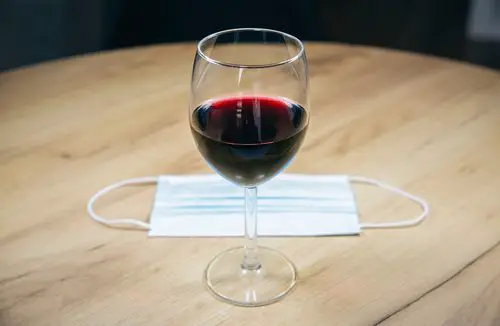A week ago The Drinks Business ran a very interesting article entitled ‘Dry Wine Solution To Sauternes ‘Crisis.’ They reported that the Bernard family, owners of Domaine de Chevalier, have unveiled their “recently acquired Sauternes property Clos des Lunes, displaying a focus on dry wines to address the “huge crisis” facing this Bordeaux appellation.”
The family purchased the chateau (formerly known as Chateau Haut Caplane) in August 2011 and shrewdly renamed it Clos des Lunes in honour of the Chinese Moon Festival, whose timing coincides with the grape harvest. Olivier Bernard is also a co-owner of the First Growth Sauternes Chateau Guiraud which hosts the Chinese Moon Festival (see my Blog The Chinese Moon Festival, Bordeaux Wine and . . . Labelling). Incidentally Guiraud also produce a dry white wine, Le G de Chateau Guiraud.
According to The Drinks Business winemaking at Clos des Lunes is overseen by the Domaine de Chevalier team and “the property is now producing around 130,000 bottles of two main cuvées:
Lune d’Argent and Lune d’Or, with a second tier offering, Lune Blanche, due to be introduced once some replanted vineyards come into production.
In addition, the property plans to produce around 2,000 bottles a year of Clair de la Lune, a sweet wine, which is not intended for commercial release, but will “keep the spirit of Sauternes”, according to Shanghai-based brand ambassador Adrien Bernard, who was showing his family’s new wines at last week’s HKTDC fair.”
Bernard explained that:
“Sauternes, which is in a huge crisis, has to increase its quantities of dry white wines . . . We are not here to break the Sauternes market . . . We’re here to prove they need to look at dry wine until the crisis is over.”
The 2012 harvest for the sweet Sauternes has been tense this year as the weather conditions have been challenging for the development of the grapes. Bill Blatch at Bordeaux Gold has been keeping an eye on the challenges faced by Sauternes producers and thinks that the production of the rich botrytis-type dry wines such as Ygrec (Y), Chateau d’Yquem‘s dry white wine may be the way forward in these conditions:
“I have always thought that this was the way to go for a part of each château’s production: All the fullness and complexity of Côtes de Jura without the oxydation. These dry botrytis wines are unique: all the smells and flavours of Sauternes yet totally dry. Great with seafood, veal, cheese, anything savoury.”
I agree with this idea, given that sweet Sauternes is very labour intensive and reliant on botrytis, it seems eminently sensible for chateaux to produce a different style of white wine as well, whether it be dry or semi-sweet. It doesn’t have to be a back up plan either – the dry whites of Sauternes are excellent wines in their own right. Chateau Coutet has recently released their new dry white Opalie de Chateau Coutet to much acclaim.
I can add my own findings here too – the two top selling whites at my online wine shop Bordeaux-Undiscovered are both from Sauternes and are M de Malle, the dry white of Sauternes Second Growth Chateau de Malle and Sainte Helene, their Second Wine, a sweet Sauternes.
I understand that the sweet Sauternes, although much loved, struggles to sell rapidly when compared to the sales of Bordeaux red but I think this will gradually change. Sweet Sauternes was a late entrant to the Asian market as they were not officially permitted to be imported until 2010. The Chinese have already developed a sweet tooth thanks to their love of Ice Wine and once the door was open Sauternes producers seemed to get quickly switched on to the potential of this huge market.
Of course it’s not all about Asia but I believe the hard work put in by chateaux owners to promote their wines abroad (see Sweet Wines of Bordeaux – Sauternes and Barsac – Aim to Capture the Chinese Market) and active campaigning by the official body Sweet Bordeaux is starting to pay off.
The movement to popularise sweet Sauternes is very dynamic and highly motivated. If you stand back and look at Sauternes and how it was promoted say, a decade ago, you can really see how things have moved on.
The style of Sauternes is also changing – there is a shift away from the heavier sticky sweet wine to a lighter style. I think that diversity in Sauternes and the sweet appellations of Bordeaux is a boon and that together with the growing trend towards sweeter wines things can only look up for sweet Bordeaux.
The boom in Moscato sales in the USA is credited to millennials growing up (see The Wall Street Journal). Apparently there is even a drive towards sweet red wine.
If Sauternes can tap that market they won’t look back. If more sweet Bordeaux producers choose to create a dry white style then they have another feather in their cap. I don’t see a crisis in Sauternes at all. I see a progressive and enterprising set of producers who are full of vitality, making incredible wines.

